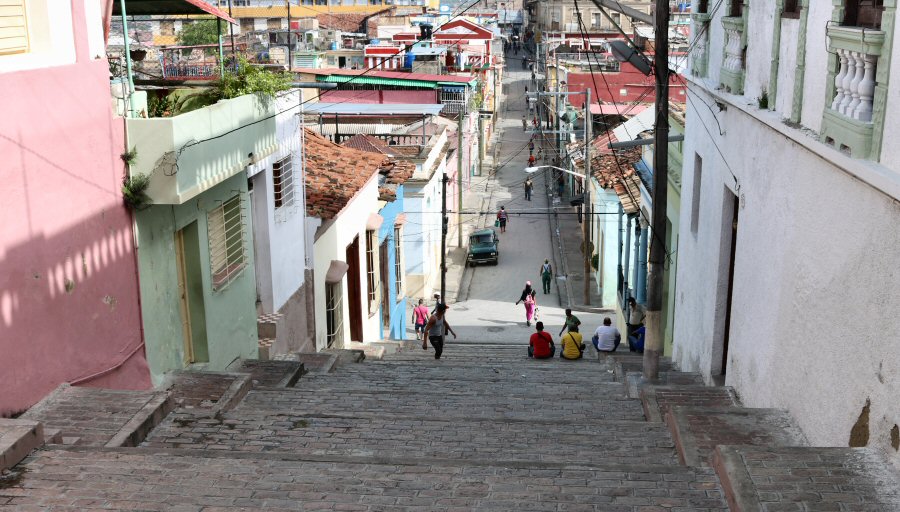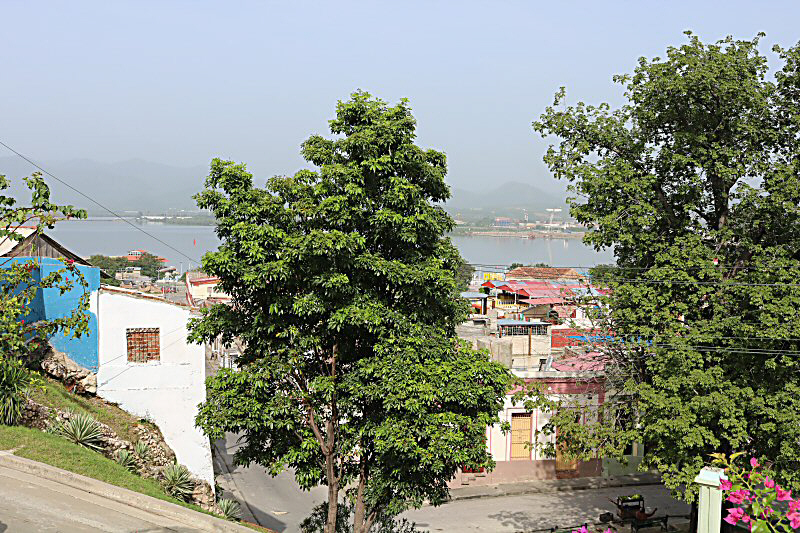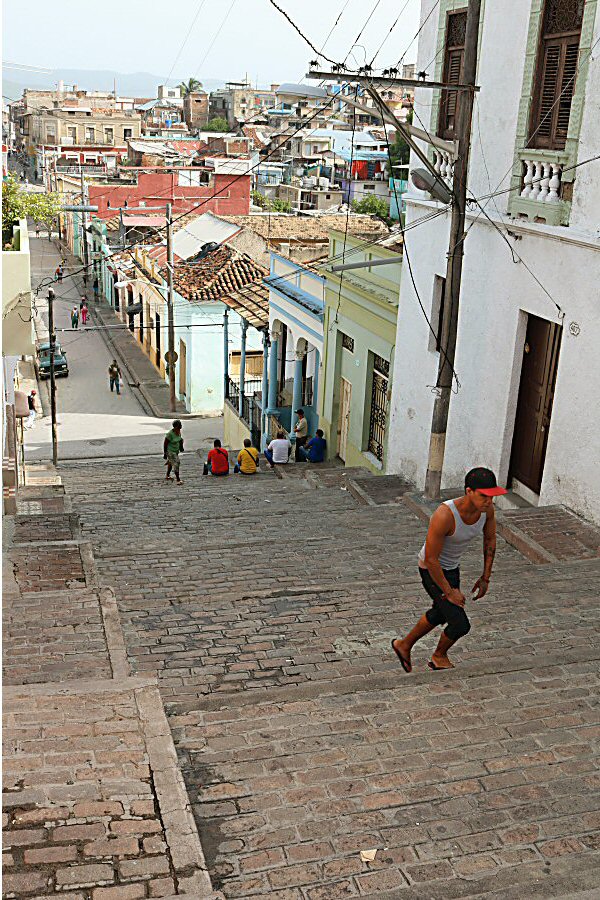Padre Pico Steps (Padre Pico Escalinata) is located at the connection of Santa Rita street with the Hospital street.


Padre Pico street (Calle Padre Pico),
being one of the doors of the neighborhood El Tivolí, is also
one of the well-known streets in Santiago de Cuba, but this fact
owes more to Padre Pico’s stairway (Padre Pico Escalinata) that
is located at the connection of Santa Rita Street with the
Hospital Street (formerly Padre Pico Street), where the street
begins to rise.
When the town Santiago was first
established in 1515, houses were built on higher levels because
the area around the bay was swampy, and immense populations of
ants caused great problems. The great threat created by the
pirates also played a role in the decision. The city expanded
laterally and upwards over time, so that the urban development
entailed the city to adopt to the irregular topography of the
land that consist of hills and severe inclinations that became
sometimes very steep, so that staircases emerged to connect the
streets. These staircases were facilitating the passage through
the city by comprising also the shortcuts. In historic center
there are six such staircases: the steps of the Callejón
de Santiago between Santa Rita and San Carlos streets, the
stairway of the Calle Virgen, the staircase of Calle Los Maceo,
the staircase of Calle Hamaca (formerly Lauro Fuentes street,
also known as Toro), the stairway on Calle Princesa between
Calle Santa Rosa and Calle Virgen and the stairs of Padre Pico
in Tivolí, the imperishable symbol of the Santiago de Cuba.
Before acquiring its peculiar steps
and the current name of Padre Pico, this segment of the city was
called under different names, such as Loma de Boca Hueca, Cuesta
de Amoedo, Loma de Piedra and Calle de los Leganitos, but the
name that survived in the popular memory was the one of Loma del
Corvecho that took its name from the Galician Juan Corvacho. He
was a winemaker and grocer that had its grocery store on the
corner of Santa Lucia Street where it connects with the Hospital
street. It is said that his life was dedicated entirely to
commerce, and he had no other fun than his work.
The stairway was built under the
auspices of the mayor Emilio Bacardí Moreau in 1899 and
officially opened in 1903. It was Emilio Bacardí that
anticipated of baptizing the old street of the hospital with the
name of Padre Pico in honor to Dr. Bernardo Antonio del Pico y
Redin (1726-1813) for his exemplary life and the love that he
had for the parishioners and the people in general. Currently
the old name “Hospital Street” (it bears that name because the
Hospital de San Juan de Dios is located on that street) has not
been erased from the popular memory, so that currently both
names are used.
Bernardo del Pico Redin was a former
priest that had a great popularity due his beneficent work by
holding positions such as the Consultant of the Holy Office in
the Catholic Church, Priest Rector of the Church of Santo Tomás
Apóstol, Prebendado Racionero, Fiscal Promoter, Episcopal Vicar,
Provisor and Vicar and Dean of the Cabildo (appointed by the
Spanish King). His effort in Hermanas de la Caridad, known as
the Colegio de Belén, which was one of the first schools of nuns
founded in El Tivolí, can’t be forgotten. He was also the
founder of the Casa de Beneficencia in Santiago de Cuba. A
monument was erected in the memory of him in front of the Church
of San Francisco (Iglesia San Francisco de Asis).
Padre Pico street witnessed the
struggle of the Cubans for independence. The corpse of
Carlos Manuel de Céspedes was veiled at the
intersection of Padre Pico and Santa Rita streets. Almost a
century later Antonio Alomá fell on these steps in 1956, when
Santiago de Cuba rose up in arms to support the landing of the
Granma yacht on the southwestern coast, called Las Coloradas.
The stairway has 52 steps, grouped in
13 blocks (4 steps in each block), and 12 rests.

view of the bay from Loma del Corvecho

